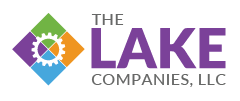Manufacturing Supply Chains: Lessons Learned from the COVID-19 Pandemic

COVID-19 is causing a hard reboot of how manufacturing supply chains are being managed. Big Four professional services firm Deloitte refers to it as the “black swan event of 2020” that may force many companies, and entire industries, to rethink and transform their global supply chain models.
When China, the world’s factory, is impacted, global supply chains are impacted.
Deloitte
Deloitte reports that manufacturers place a huge reliance on Chinese supply chains. “A new Dun & Bradstreet study also estimates that 163 of the Fortune 1000 have Tier 1 suppliers (those they do direct business with) in the impacted area, and 938 have one or more Tier 2 suppliers (which feed the first tier) in this same impacted area. Just because you don’t have any direct suppliers in the impacted areas in China, does not mean that you are safe from disruption. Visibility to only Tier 1 suppliers will likely be insufficient for most organizations looking to manage supply disruption risks. However, very few organizations can trace their supply chain beyond their Tier 1 suppliers, and advanced digital solutions are generally required to trace supply networks reliably across the multiple tiers of suppliers that are required to fully understand supply-side risk”.
According to Deloitte, some companies are better prepared than others to respond to the pandemic. For one, they are not putting all of their eggs in one basket.
“These companies have developed and implemented supply chain risk management and business continuity strategies. They have also diversified their supply chains from a geographic perspective to reduce the supply-side risks from any one country or region. They have multi-sourced key commodities or strategic components to reduce their reliance on any one supplier, and they had considered inventory strategy to buffer against supply chain disruption,” continues Deloitte.
End-to-end visibility doesn’t have to be hard. It’s where your technology begins to shine. In a recent blog post, leading global business software provider, Infor says, “…you need to consider everything impacting inventory in the supply chain. This encompasses enterprise-level demand forecasts and purchase orders, collaboration with suppliers to ensure availability and capacity needs are met, connected or single-instance implementation of ERPs, warehouse management across your distribution network, transportation tracking and visibility, in-house and out-sourced production, and final delivery and settlement.”
“Having holistic-yet-granular visibility and control allows for quick identification of potential trouble spots in the event of a disruptive event and enables rapid responses to ameliorate the adverse impact.”
The Lake Companies, an Infor Gold Channel Partner, says a pandemic is just another example of supply chain interruptions that impact the manufacturing industry. Hurricanes, tornadoes, floods, forest fires, recessions, etc., all have the potential to impact supply chains and your ability as a manufacturer to produce and ship products. In the case of COVID-19, China made a considerable dent in the global economy because they are relied upon as a world supply source.
That reliance on China is not just a problem for manufacturers, so manufacturers are not alone. There is an extensive reliance by the U.S. on China as a supplier for active pharmaceutical ingredients and pharmaceuticals that cure, treat, or prevent hypertension, high cholesterol, pain, stroke, cardiac disease, infections, and so on. In our case, catastrophic events that impact China could also cause U.S. mortality to skyrocket.
In the same way Deloitte discovered companies that implemented supply chain risk management and business continuity strategies, many manufacturers can do that as well in their own world. The “world” for your business could be a business area that is local, regional, national, or even global. In our eyes, too many companies have such inefficient sourcing methods, their buyers are literally heads down processing purchase orders. An ERP system like Infor’s CloudSuite™ Industrial (CSI/SyteLine), allows the process to be handled much faster, easier and more accurately, freeing up time to manage your supply chain better.
What do you do with the new time that is now available (we refer to as industrial whitespace™)?
You fill the space by having your buyers analyze your supply-side risks.
Invest the time using Business Intelligence (BI) to monitor your key commodities and strategic components to reduce their reliance on any one supplier. You should have years of information in your ERP system to analyze.
Applications like The Lake Companies Fact-Trak BI allow manufacturers to analyze their entire supply-side, watching volume, seasonal needs, the suppliers you source from and how well you are multi-sourcing.
Determine your critical components and assess your reliance on them.
Go after the most critical needs and find other suppliers that you can use as an alternative provider.
Make a strategic decision to monitor your inventories and spread out your eggs so you can be more prepared for the next supply chain casualty.
Forward-looking companies practice risk mitigation by developing options and actions to enhance opportunities and reduce threats to their organizations. If we can learn anything from this COVID-19 black swan event, it is better to manage our supply chains and increase our end-to-end visibility through the supply pipeline by enabling smart technology. Infor CloudSuite Industrial along with supply-side analytics from The Lake Companies can dramatically improve visibility across the end-to-end supply chain and support more agility, flexibility, and resiliency.

